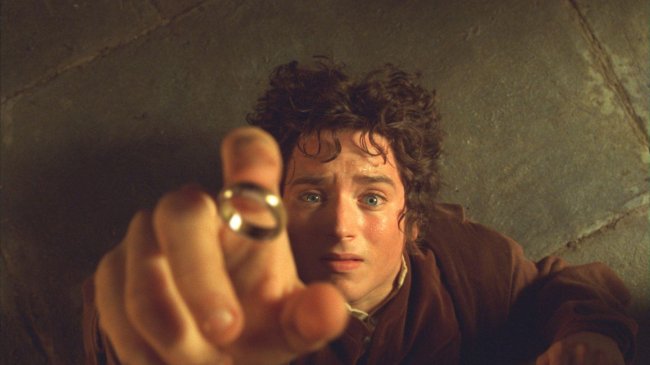
The traditional definition of a theatrical prop is; any object that a character interacts with during the action of a scene. In film, props are that and yet so much more. A prop can be a small plot point, a central plot element, an offhand item or even a character in itself.
Throughout film history, there have been hundreds of memorable props. These props become forever associated with the films in which they appear, and often end up as highly sought-after memorabilia for fans.
Narrowing down the possible props that could appear on this list was almost an impossible task. There was the box of chocolates from Forrest Gump that gave inspiration to a much-quoted film line, the horse’s head from The Godfather that became a common cultural reference, and the Swingline red stapler from Office Space that had scores of people trying to buy the same one, only to find that Swingline did not actually make a red stapler. The power of a good prop has no bounds. Here is a list of some of film’s most memorable props.
10. Cobb’s totem/spinning top (Inception)
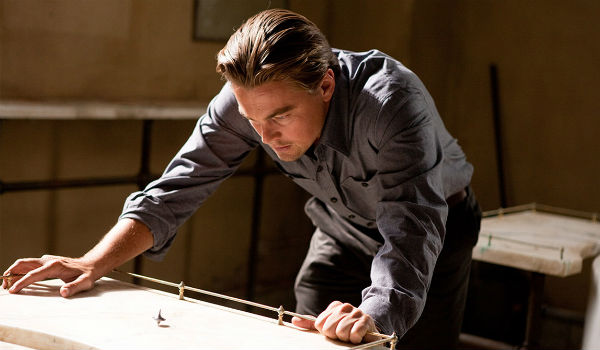
Christopher Nolan’s 2010 visual masterpiece Inception caused much discussion, in particular the final scene and controversial ending involving a now iconic film prop. Earlier in the film, it has been established that a personal totem can tell if one is experiencing a dream or reality. In Cobb’s case, a spinning top will spin indefinitely if he is stuck in someone else’s dreamscape, or will topple if he is in the real world. In the final scene, Cobb spins the top but the screen cuts to black before the audience sees whether the totem topples or not.
Property master Scott Maginnis took an old spinning top that belonged to Nolan, and completely redesigned it. He spent months on designing various other props for the film, such as the case that transports in and out of their dreams, but the design of the spinning top only took around three hours.
The use of such a visually simple but ambiguously complex prop is what makes Cobb’s spinning top such a brilliant and iconic prop. As well as being engaging on screen, it has become a source of frustration, intrigue and debate for film fans. Nolan has since refused to fully explain what the ending means, only hinting at aspects and ideas. To use a prop that invokes such a strong reaction and continued interest from the audience is what makes Cobb’s spinning top such a great film prop.
9. Andy Dufresne’s posters (The Shawshank Redemption)
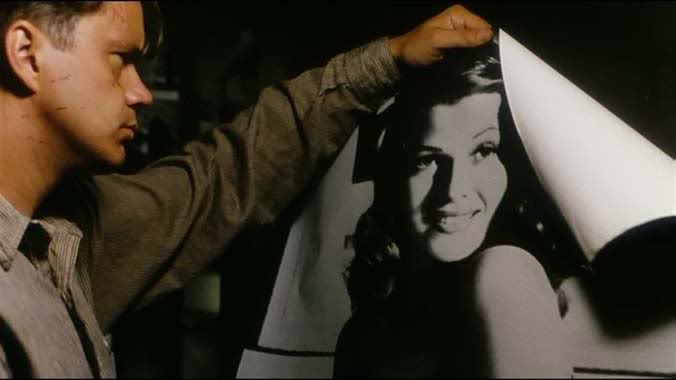
Andy uses three different posters, in The Shawshank Redemption, in his cell over the course of his imprisonment – a Rita Hayworth poster, a Marilyn Monroe poster and a Raquel Welch poster. The Raquel Welch poster is probably the most iconic, due to it being in the pivotal scene where the Warden discovers the escape hole and Andy’s plan is revealed.
The Shawshank Redemption was deemed a box office failure at the time of its release, but has since gone on to become one of the most popular films of all time. Any and all of the props used in the film can now considered iconic, including Andy’s rock hammer and carved chess pieces. Yet the posters hold a special significance.
Not only are they associated with the film and character of Andy Dufresne, and are possible points of interest for the audience. They are infinitely clever in that they form a critically important part of the story, yet the audience do not know that. In fact, it could be argued that much of the audience do not actually take much notice of the posters. This makes the reveal even more of a shock for the audience, and the posters themselves a major part of prop film history.
8. Hoverboard (Back to the Future Part II)
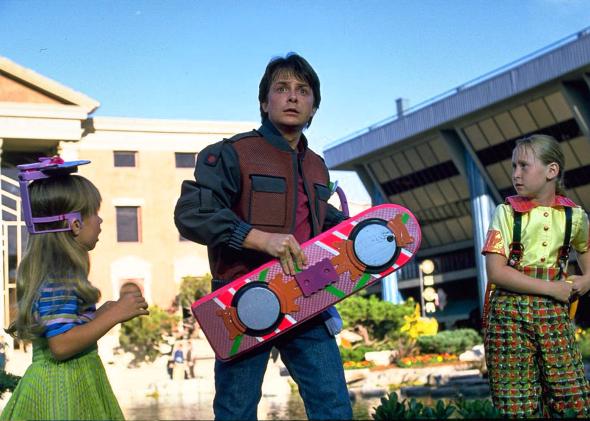
The concept of a hoverboard was not first developed by the filmmakers of the Back to the Future franchise, however it was popularised by the films. In Back to the Future Part II (1989), Marty McFly rides a Mattel hoverboard when he is trying to escape from Griff Tannen and his gang in the year 2015. And then Marty uses the hoverboard again in Back to the Future Part III (1990).
The hoverboard was a widely popular prop with film audiences. Director Robert Zemeckis joked in an interview that hoverboards were real, but were not commonly promoted due to parents worrying over how safe they were. This caused a frenzy amongst fans who began scouring toy stores, desperate to get their hands on one. Eventually Zemeckis had to retract his joke.
However, this didn’t stop fans continually hoping for the development of the same hoverboard from the films. The Back to the Future films spawned many iconic props, but the hoverboard stands out as the most talked about, unique and fun.
7. A bullwhip (Indiana Jones franchise)
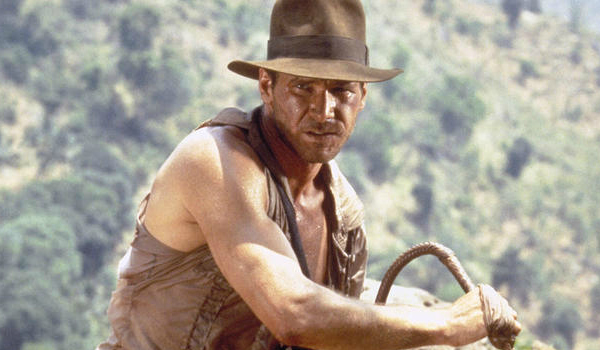
The 450-series bullwhip, as created by David Morgan, became a film icon when it appeared in the first Indiana Jones film in 1981. It was woven into the story by the first film’s stunt director Glenn Randell, and ended up becoming an integral and highly recognised part of the character of Indiana Jones.
Over thirty whips of various lengths were used for the films, the one that Harrison Ford most commonly carried was ten feet in length. Over the years, as the films progressed, minor changes were made to the whip, but the basic design remained the same.
Several of the whips used in the films have since gone on to be auctioned, and are seen as highly sought-after film memorabilia. One bullwhip was sold to a private collector for around $200,000. As a film prop, Indiana Jones’ bullwhip has become iconic as part of the character’s ensemble and personality, yet also as an interesting and unique weapon for a film character.
With four films already under the belt for the Indiana Jones franchise, a fifth one has been planned for release in 2020. And without a doubt, it can be certain that no matter what the plot and outcome of the film is – Indy’s trusty bullwhip will be by his side.
6. The red and blue (The Matrix)

The Matrix is considered one of the greatest sci-fi films of all time, and was a critical and financial success. The Matrix had a massive influence on popular culture, some of which is due to the props used. One of the most iconic props from the film is that of the red and blue . The red and blue are used in the scene where Morpheus explains the true nature of the Matrix to Neo. He tells Neo that the blue pill will allow him to stay in the fabricated reality of the Matrix, and the red pill will unplug Neo from the Matrix.
Production designer on the film, Owen Paterson, explained that the were actual , but a doctor was consulted so that the would not be harmful if swallowed. Gelatine caps were used to create the blue and red colour.
The red and blue have since become synonymous with the idea of taking risks or playing it safe, confronting the truth of your reality or burying your head in the sand. And again, this prop was so successful and effective due to its innate simplicity. The also play an incredibly significant role in the film and its narrative, so are very memorable for the audience. The shot of Morpheus holding out the red and blue to Neo is an iconic shot in film history, particularly sci-fi film history, and the red and blue are integral to that.